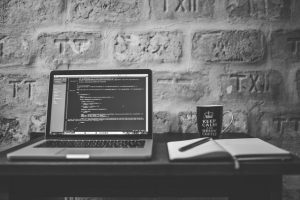Python is a general-purpose interpreted, interactive, object-oriented, and high-level programming language. It was created by Guido van Rossum during 1985- 1990.
But officially Python was made public in 1991.
Python is recommended as the first programming language for beginners.
Python is easy to learn yet powerful and versatile scripting language, which makes it attractive for Application Development.

Python’s syntax and dynamic typing with its interpreted nature make it an ideal language for scripting and rapid application development.
Python supports multiple programming pattern, including object-oriented, imperative, and functional or procedural programming styles.
Python is not intended to work in a particular area, such as web programming. That is why it is known as a multipurpose programming language.
FOR EXAMPLE:
Print(“Hello World”)
The name Python was selected from the TV show ”THE COMPLETE MONTY PYTHON CIRCUS”..
Internally Google and Youtube use python coding.
Top Software Companies like Google, Microsoft, IBM ,Yahoo using python..
APPLICATIONS OF PYTHON
Easy-to-learn − Python has few keywords, simple structure, and a clearly defined syntax. This allows the student to pick up the language quickly.
Easy-to-read − Python code is more clearly defined and visible to the eyes.
Easy-to-maintain − Python’s source code is fairly easy-to-maintain.
A broad standard library − Python’s bulk of the library is very portable and cross-platform compatible on UNIX, Windows, and Macintosh.
Interactive Mode − Python has support for an interactive mode which allows interactive testing and debugging of snippets of code.
Portable − Python can run on a wide variety of hardware platforms and has the same interface on all platforms.
Extendable − You can add low-level modules to the Python interpreter. These modules enable programmers to add to or customize their tools to be more efficient.
Databases − Python provides interfaces to all major commercial databases.
GUI Programming − Python supports GUI applications that can be created and ported to many system calls, libraries and windows systems, such as Windows MFC, Macintosh, and the X Window system of Unix.
Scalable − Python provides a better structure and support for large programs than shell scripting.
PYTHON VERSIONS
Python 1.0V introduced in 1994.
Python 2.0V introduced in October 2000.
Python 3.0V introduced in December 2008.
Where we use Python?
1 . For developing Artificial intelligence
2 . For IOT
3 . For developing Desktop Applications
4 . For Network Programming
5 . For Machine learning
6 . For Data Analysis
7 . Enterprise Applications
8 . 3D CAD Applications
9 . Computer Vision
10 . Image Processing Applications.
Speech Recognitions.
Python Popular Frameworks and Libraries
Python has wide range of libraries and frameworks widely used in various fields such as machine learning, artificial intelligence, web applications, etc. We define some popular frameworks and libraries of Python as follows.
1. Web development (Server-side) – Django Flask, Pyramid, CherryPy
2 . GUIs based applications – Tk, PyGTK, PyQt, PyJs, etc.
3 . Machine Learning – TensorFlow, PyTorch, Scikit-learn, Matplotlib, Scipy, etc.
4 . Mathematics – Numpy, Pandas, etc.

ADVANTAGES OF PYTHON
1 .Easy to Read, Learn and Write.
2 .Python is a high-level programming language that has English-like syntax. …
3 .Improved Productivity.
4 .Interpreted Language. …
5 .Dynamically Typed. …
6 .Free and Open-Source.
7 . Vast Libraries Support. …
8 . Portability. …
9 .Slow Speed.
10. Ease Learning…
DISADVANTAGES OF PYTHON
1 . Slow Execution
2 . Large amount of memory
3 . Slow processing
4 . Runtime errors
5 . Database access…
Python 2 vs. Python 3
In most programming languages, whenever a new version releases, it supports the features and syntax of the existing version of the language, therefore, it is easier for the projects to switch to the newer version. However, in the case of Python, the two versions Python 2 and Python 3 are very much different from each other.
Python Basic Syntax
There is no use of curly braces or semicolons in Python programming language. It is an English-like language. But Python uses the indentation to define a block of code. Indentation is nothing but adding whitespace before the statement when it is needed.
